
Organized by Peking University, Nature Sensors, Nature Materials, Nature Electronics, Nature Nanotechnology, Nature Reviews Electrical Engineering
The Nature conference on Low-Dimensional Electronics explores the latest advancements in low-dimensional materials for next-generation semiconductor technologies. The conference will feature keynotes and invited talks from leading experts on the synthesis and characterization of low-dimensional materials and mixed-dimensional heterostructures, high-performance electronic devices, and novel device concepts. Key topics will include innovations in carbon nanotubes, graphene, and 2D materials, as well as breakthroughs in terahertz radio-frequency devices and beyond-Si electronics. This event will highlight transformative research pushing the boundaries of low-dimensional electronics and their potential to shape the future of both academia and industry.
Contact Us
Event details
Speakers

Deji Akinwande
University of Texas at Austin, USA

Kaustav Banerjee
UC Santa Barbara, USA
Kaustav Banerjee is Professor of Electrical and Computer Engineering and Director of the Nanoelectronics Research Lab at UC Santa Barbara. He is internationally recognized for pioneering contributions to energy-efficient electronics, 3D integrated circuits, and the application of low-dimensional materials in micro- and nanoelectronics.
His seminal work on two-dimensional (2D) materials—including interconnects, transistors, memory, and monolithic 3D integration—has addressed key scaling challenges in mainstream semiconductor technology. He invented the graphene kinetic inductor, a breakthrough described by Forbes as a potential “trillion-dollar” innovation for overcoming fundamental limits in on-chip inductors.
In 2021, he co-founded Destination 2D Inc. to accelerate the integration of 2D materials into CMOS, building on his pioneering contributions to intercalated-graphene interconnects and their CMOS-compatible synthesis. The company and its core technology were recently featured in IEEE Spectrum for their potential to extend Moore’s Law.
Banerjee is a Fellow of IEEE, APS, AAAS, JSPS, and AIIA. His awards include the IEEE Kiyo Tomiyasu Award, the Bessel Prize from the Humboldt Foundation, and the JSAP Fellow International title from the Japan Society of Applied Physics. He is also a Clarivate Analytics Highly Cited Researcher and a recipient of UCSB’s Outstanding Graduate Mentor Award. He earned his Ph.D. in Electrical Engineering and Computer Sciences from the University of California, Berkeley.

Saptarshi Das
The Pennsylvania State University, USA
Dr. Das received his B.Eng. degree (2007) in Electronics and Telecommunication Engineering from Jadavpur University, India, and his Ph.D. degree (2013) in Electrical and Computer Engineering from Purdue University. He was a Postdoctoral Research Scholar (2013-2015) and Assistant Research Scientist (2015-2016) at Argonne National Laboratory (ANL). Dr. Das joined the Department of Engineering Science and Mechanics (ESM) at Penn State University in January 2016. Dr. Das received the Young Investigator Award from the United States Air Force Office of Scientific Research in 2017 and the National Science Foundation (NSF) CAREER award in 2021. Das Research Group at Penn State focuses on 2D microelectronics for monolithic 3D integration, bio-inspired sensing, neuromorphic computing, and hardware security.

Aaron Franklin
Duke University, USA
Dr. Aaron Franklin is the Addy Distinguished Professor in the Departments of Electrical & Computer Engineering and Chemistry at Duke University, where he is also the Associate Dean for Faculty Affairs in the Pratt School of Engineering. Dr. Franklin received his Ph.D. in Electrical Engineering from Purdue University in 2008 and then spent six years on the research staff at the IBM T. J. Watson Research Center in Yorktown Heights, NY. In 2014, he joined the faculty at Duke where his group explores the use of 1D and 2D nanomaterials for high-performance nanoscale devices, low-cost printed and recyclable electronics, and biomedical sensing systems. He is most widely known for his work on low-dimensional nanoelectronics with specific emphasis on carbon nanotube (CNT) transistors, including device scaling, transport studies, and advanced integration approaches. In addition to leading a successful scientific research group, Dr. Franklin has been actively involved in the translation of inventions out of the lab, holding more than 50 issued patents and being engaged in two funded start-ups, one of which was acquired by a Fortune 500 company. He is a fellow of the IEEE and NAI and has published more than 100 scientific papers in the field of nanomaterial-based electronics.

Tibor Grasser
TU Wien, Austria
Prof. Tibor Grasser is an IEEE Fellow and head of the Institute for Microelectronics at TU Wien, Austria. He has edited various books, e.g. on the bias temperature instability, hot carrier degradation, and low-frequency noise (all with Springer), is a distinguished lecturer of the IEEE EDS, has been involved in outstanding conferences such as IEDM (General Chair 2021), IRPS, ESSDERC (TPC Co-Chair 2015), IIRW (General Chair 2014), and SISPAD (General Chair 2007), is a recipient of the Best and Outstanding Paper Awards at IRPS (2008, 2010, 2012, and 2014), IPFA (2013 and 2014), ESREF (2008) and the IEEE EDS Paul Rappaport Award (2011). He served as an Associate Editor for IEEE T-ED and Microelectronics Reliability (Elsevier).

Zheng Vitto Han
Shanxi University, China
Zheng Vitto Han is a research professor at the Institute of Optoelectronics, Shanxi University, China. He also serves jointly as the deputy lab director at the Liaoning Academy of Materials (LAM) and the director of the Institute of Quantum Materials and Devices at LAM in Shenyang, China. He obtained his Ph.D. at the Néel Institute, CNRS, France, and conducted postdoctoral research at Columbia University in New York City. His research primarily focuses on the emerging physical properties of functional materials at mesoscopic scales and on further implementing these interesting properties in future applications of nano-assemblies and nanoelectronics. Over the past few years, his team has uncovered a series of novel physical phenomena and nanostructures, such as the demonstration of a finFET with a single atomic fin, the realization of robust quantum Hall phases through the interfacial charge transfer and the induced charge orderings, the development of van der Waals polarity-engineered 3D integration of 2D complementary logic. The related works have been published in journals including Nature, Nature Nanotechnology, Nature Electronics, and Nature Communications.
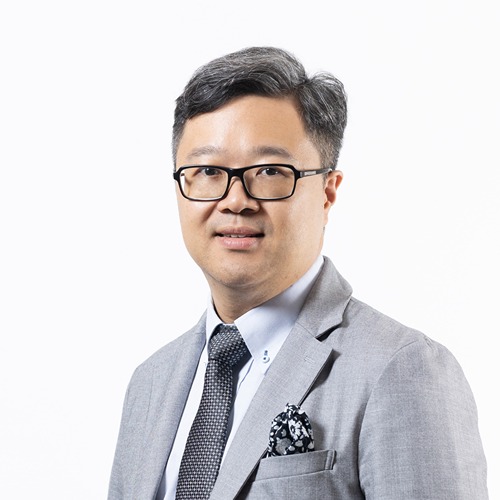
Johnny C Y HO
City University of Hong Kong, China
Johnny C. HO is the Associate Vice-President (Enterprise), a Chair Professor in the Department of Materials Science and Engineering, and a core member in the State Key Laboratory of Terahertz and Millimeter Waves at the City University of Hong Kong. He also holds a joint professorship at the Institute for Materials Chemistry and Engineering at Kyushu University, Japan. He received his BS degree in Chemical Engineering, and MSc and PhD degrees in Materials Science and Engineering at the University of California, Berkeley, USA, in 2002, 2005, and 2009, respectively. Between 2009 and 2010, he worked as a postdoctoral researcher at the Nanoscale Synthesis and Characterization Laboratory at Lawrence Livermore National Laboratory, USA. In 2010, he joined the faculty at City University of Hong Kong. His research primarily focuses on developing semiconductor nanomaterials with various dimensionalities and compositions, aiming to unravel their structure-composition-surface-property relationships for high-performance electronic and energy-harvesting devices. He has published over 300 papers, including Nature Materials, Nature Communications, etc. His work has been honored with numerous awards, including the Semi Grand Prix at the Silicon Valley International Invention Festival in 2024, the Hong Kong Research Grant Council's Research Fellow Award in 2020, and the World Cultural Council Special Recognition Award in 2018.

Andras Kis
EPFL, Switzerland
Andras Kis is a Full Professor of Electrical Engineering at EPFL, Lausanne. His research interests include electronic devices, TMDC exciton and valley physics, and material growth. He pioneered the use of the 2D semiconductor MoS₂ in transistors, a breakthrough that led to MoS₂ being recognized in the ITRS roadmap and gaining widespread attention with the corresponding paper having received more than 16’000 citations. Atomically thin 2D semiconductors like MoS₂ are emerging as a new material class in the semiconductor industry, with applications in scaled devices, neuromorphic circuits, and photonic devices due to their favorable electrical and optical properties.
Andras Kis was born in Zagreb, Croatia. He received his M. Sc degree in physics from the University of Zagreb, Croatia and the Ph.D. degree in physics from École Polytechnique Fédérale de Lausanne, Switzerland in 2003 in the group of Prof. László Forró. He worked as a postdoctoral researcher at the University of California, Berkeley from 2004 to 2007 in the group of Prof Alex Zettl. He was appointed as an assistant professor at the Institute of Electrical engineering, EPFL in 2008.
A highly cited researcher and an IEEE Fellow, Andras Kis is the recipient of the 2024 IEEE Lotfi A. Zadeh Award for Emerging Technologies, recognizing his pioneering contributions to 2D materials and electronic devices. He currently serves as the Editor-in-Chief of Nature Partner Journal: 2D Materials and Applications.

Young Hee Lee
Sungkyunkwan University, Korea
Young Hee Lee has been a full professor at the Division Center for Low-dimensional Quantum Materials (LQM), Hubei University of Technology (HBUT), Wuhan, China, since 2024. He received Ph. D. from Kent State University in Ohio (1986) in physics. Prior to joining SKKU in 2001, Prof. Lee was a full professor in the Physics Department at Chonbuk National University since 1986. He was a visiting scholar at Ames Laboratory, Iowa State University in 1989, IBM, Zurich in 1993, and Michigan State University in 1996.He served as the Director of Center for Integrated Nanostructure Physics, Institute for Basic Science at SKKU until 2023 from 2012. He serves for an Associate Editor of ACS Nano. He was awarded the first SKKU fellow in 2004 at SKKU, Science award from Korean Physical Society in 2005, Lee Hsun Research Award, IMR, Chinese Academy of Sciences, China in 2007, Presidential Award in Science and Education in 2008 in Korea, and Einstein Award IMR, Chinese Academy of Sciences, China in 2017. He was also nominated as a National Scholar by Ministry of Education in 2006 and has been a fellow of Korean Academy of Science and Technology since 2007. He recently got Sudang prize in 2015, Kyung Am prize in 2019, and Song-Bong prize in 2020.
Prof. Lee’s work has focused on understanding the fundamental properties in low dimensional systems and their hybrid heterostructures, design and synthesis of various heterostructures to implement unique physical and chemical properties. His research covers carrier dynamics,/carrier multiplication phenomena, hot carrier solar cells, 2D magnetic materials and devices toward spintronics, Bose-Enstein condensation in solids, and quantum mechanical tunneling phenomena. His pioneering woks on synthesis and engineering of electronic and atomic structures of carbon nanotubes and graphene, other 2D materials and their applications to electronic and optoelextronic devices, spintronics, and energy harvest have led not only nanoscience but also nanotechnology industry in Korea. He has published more than 672 scientific papers in international journals and his total citation number exceeds over 89,000 times with H-index of 143 (Google Scholar, July 2025).

Lance Li
National University of Singapore, Singapore
Dr. Lain-Jong (Lance) Li is currently a Distinguished Professor in the Department of Materials Science at the National University of Singapore. He has held esteemed positions, including Chair Professor of Future Electronics at The University of Hong Kong and Director of Corporate Research at TSMC. He is a Fellow of the Royal Society of Chemistry and serves as an Associate Editor for Nano Letters under the American Chemical Society.
Dr. Li completed his Bachelor’s and Master’s degrees in Chemistry at National Taiwan University in 1994 and 1996, respectively. Subsequently, he worked as a Senior R&D Engineer at TSMC from 1997 to 2002. He obtained his Ph.D. in Condensed Matter Physics from the University of Oxford in 2006 and commenced his academic career as an Assistant Professor at Nanyang Technological University in Singapore. He served as an Associate Research Fellow at Academia Sinica in Taiwan in 2010 and joined KAUST in Saudi Arabia in 2014, where he advanced to the position of Full Professor by 2016. Dr. Li returned to TSMC as the Director of Corporate Research in late 2017. In 2021, he was appointed as a Chair Professor at The University of Hong Kong, and in 2025, he joined the National University of Singapore. His research is focused on Chemical Vapor Deposition (CVD), tool design, device fabrication and integration, and the growth of 2D semiconductor materials, including graphene and boron nitride. He holds over 60 U.S. patents and has been recognized as a Highly Cited Researcher from 2018 to 2024, with more than 500 publications, 84,000 citations, and an H-index of 134 according to the AD Science Index.
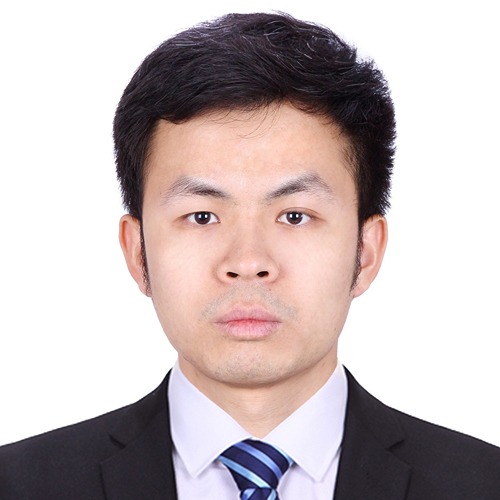
Xiaoyang Lin
Beihang University, China
Prof. Xiaoyang Lin is now a full professor in Fert Beijing Research Institute, Beihang University. He is the deputy director of State Key Laboratory of Spintronics at Beihang University. He is also the director of Nano Center in Hangzhou campus of Beihang University.
He got his bachelor degree and PhD degree from Tsinghua University in 2010 and 2015, respectively. He has been working on emerging materials and devices of spintronics. He has published more than 70 papers in SCI journals, such as Nature Electronics, Nature Communications, Science Advances, PNAS, Applied Physics Reviews, Matter, Nano Letters, ACS Nano, Nano Research and IEEE TRs, with more than 3000 total citations; > 50 Chinese invention patents, > 30 USA invention patents. He is the editor of Journal of Semiconductor and Advanced Devices & Instrumentation. He has received awards such as the First Prize for Natural Science from the Beijing Municipal Government and First Prize for Technical Invention from the Chinese Instrument and Control Society.
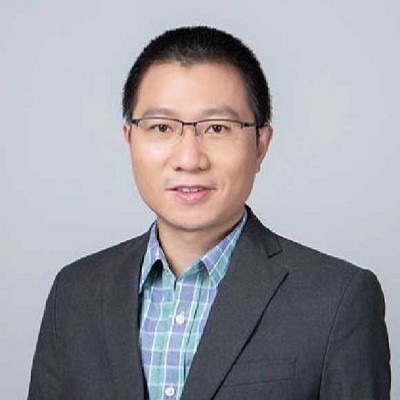
Kaihui Liu
Peking University, China
Kaihui Liu is currently a professor of Physics at Peking University. His current research interests are the designed growth of 2D single-crystals and the corresponding optical device applications. His current interests focus on (i) designing the interfacial engineering technique for the universal growth of meter-sized 2D single-crystals, and (ii) fabricating new-concept 2D materials optical fibre and optical crystal devices. In recent years, professor Liu has published more than 60 correspondence-authored papers, including Science (3), Nature (3), other Nature series (19) and PRL (2). He received the National Science Fund of China for Distinguished Young Scholars in 2020, the Xplorer Prize in 2021, and the First prize of Beijing Science and Technology in 2022. Currently, Prof. Liu serves as the dean of the Institute of Condensed Matter and Materials Physics at Peking University and the project leader of China’s National Key R&D Program.

Shigeo Maruyama
The University of Tokyo, Japan
Dr. Shigeo Maruyama, FRSC, received his Ph.D. from the University of Tokyo in 1988. He worked as a Research Associate until 1991, as a Lecturer for a year, as an Associate Professor from 1993, and as a full Professor from 2004 at the University of Tokyo. Since 2014, he has been a Distinguished Professor at the Department of Mechanical Engineering, School of Engineering at the University of Tokyo. He joined Professor Richard Smalley's group at Rice University as a visiting fellow for about 2 years from 1989. He was also assigned as a visiting professor at Ecole Centrale Paris in 2006, the cross-appointment fellow for advanced industrial science and technology (AIST) from 2015 to 2021, a guest professor at Peking University from 2016 to 2017, and a Qiushi Guest Professor at Zhejiang University from 2024.
His research interests include nanoscale thermal engineering, molecular dynamics simulations, carbon nanotubes, graphene, 1D heterostructures, and solar cell applications. He developed the alcohol catalytic chemical vapor deposition (ACCVD) process for synthesizing single-walled carbon nanotubes (SWCNTs) in 2002. More recently, he has developed 1D van der Waals heterostructures based on SWCNTs, where SWCNTs are co-axially wrapped by hexagonal boron nitride nanotube (BNNT) and transition metal dichalcogenides (TMD) nanotubes. He served as the president of “The Fullerenes, Nanotubes, and Graphene Research Society" from 2011–2020 and is the co-chair of the steering committee of "International Conference on Science and Application of Nanotubes and Low-Dimensional Materials" (NT). Since 2023, he has been a member of the Engineering Academy of Japan.

Lianmao Peng
Peking University, China
Lian‑Mao Peng is Professor and Dean of the School of Electronics at Peking University. He earned a BSc in Radio Electronics from Peking University in 1982 and later moved to the United States through the CUSPEA program initiated by Prof. T. D. Lee. He completed his PhD in 1988 at the Center for High Resolution Electron Microscopy, Arizona State University, under Prof. J. M. Cowley FRS. From 1989 to 1990, he worked with Prof. M. J. Whelan FRS at the University of Oxford as a research assistant and, in 1990, was named a Glasstone Research Fellow at Oxford and a Presidential Scholar of the International Federation of Societies for Electron Microscopy.
Returning to China in late 1994, Prof. Peng joined the Beijing Laboratory of Electron Microscopy, Chinese Academy of Sciences, as a research professor and received support from the inaugural National Science Fund for Distinguished Young Scholars. In 1999, he became one of the first Changjiang Distinguished Professors at Peking University. He was elected Fellow of the Institute of Physics (UK) in 2000 and Academician (Member) of the Chinese Academy of Sciences, Division of Technological Sciences, in 2019.
Prof. Peng has published more than 400 SCI‑indexed papers in leading journals including Science, Nature, and Nature Electronics, and authored the monograph High‑Energy Electron Diffraction and Microscopy (Oxford University Press). His work received the Second Class National Natural Science Award in 2010 and 2016, and has been highlighted among China’s Top 10 Basic Science Research News (2000), Top 10 Scientific Advances (2011), Top 10 Science and Technology Progress News (2023), and the Top 10 Scientific and Technological Advances in Chinese Universities (2000, 2017, 2024). In 2018, it was recognized as a Major Landmark Original Achievement by the National Science and Technology Innovation Center. His research has been cited 13 times by the International Technology Roadmap for Semiconductors (ITRS), strengthening China’s standing in this strategic field. His honors include the Ho Leung Ho Lee Foundation Prize for Scientific and Technological Progress (2018) and the National Award for Innovation Excellence (2017).

Uwe Schroeder
NaMLab gGmbH, Dresden, Germany
Uwe Schroeder has been the deputy scientific director at the Nanoelectronic Materials Laboratory (NaMLab) in Dresden since he joined the company in 2009. His research focuses on the material properties of ferroelectric hafnium oxide and its integration into future devices. He is primarily involved in process integration, device characterization, and reliability improvement. Previously, he worked at the Infineon/Qimonda DRAM Development Center in Fishkill, New York and Dresden, Germany, since 1997. There, he developed high-k dielectrics for integration into DRAM capacitors. During this time, the previously unknown ferroelectric properties of doped HfO2-based dielectrics were discovered in 2006. Uwe Schroeder received his Ph.D. from the University of Bonn, Germany, including a research stay at UC California, Berkeley, and worked as a postdoctoral researcher at the University of Chicago.
He is (co-)author of more than 570 papers and conference contributions and more than 30 patents, including more than 235 peer-reviewed publications, 70 invited presentations on ferroelectric HfO2 material properties and devices based thereon. He has co-edited two editions of a book on ferroelectric HfO2, was on the editorial board of IEEE Electron Devices Letters, and is a member of several IEEE and AVS technical program committees. Dr. Schroeder is the 2019 recipient of the FMA International Award for Ferroelectric Materials and Their Applications.

Aaron Voon-Yew Thean
National University of Singapore (NUS), Singapore
Aaron Voon-Yew Thean is the GlobalFoundries Professor of Electrical and Computer Engineering at the National University of Singapore (NUS). He is currently the Deputy President (Academic Affairs) and Provost of NUS. He was he Founding Dean of NUS College of Design and Engineering (2022), and the Dean of the Faculty of Engineering (2019). Aaron founded the $70M Applied Materials-NUS Corporate Laboratory at NUS in 2018, a major research collaboration between US-based Applied Materials and the University to co-innovate on next-generation semiconductor materials. Aaron currently directs the Singapore Hybrid-Integrated Next-Generation μ-Electronics (SHINE) Centre, a National Medium-Sized Research Center funded by the Singapore National Research Foundation to innovate on Heterogeneous Integration. Prior to joining NUS in 2016, Aaron was the Vice President of Logic Technologies at IMEC. Working with Semiconductor Industry leaders like Intel, TSMC, Samsung, Global foundries, Apple, and Sony, where he directed the research and development of next generation semiconductor technologies and emerging nano-device architectures. Prior to IMEC, he had careers at major US Semiconductor companies like Qualcomm, IBM, and Motorola/Freescale. Aaron graduated from University of Illinois at Champaign-Urbana, USA, where he received his B.Sc. (Highest Honors), M.Sc., and Ph.D. degrees in Electrical Engineering (Edmund J. James Scholar). He has published over 400 technical papers and holds more than 50 US patents. Aaron was recognized as Singapore’s National Research Foundation’s Returning Singapore Scientist and more recently, he has been recognized as a fellow of the US National Academy of Inventors.

Yan Wang
University of Cambridge, UK
Dr Yan Wang received her PhD from University of Cambridge in 2021 and become an independent PI at University of Cambridge in 2024. She is a research fellow at St John’s College at Cambridge. Her research focuses on developing ultra-low power electronics based on two dimensional (2D) materials. She develops innovative methods to study atomic interfaces using imaging, spectroscopic, and electronic techniques, leveraging these approaches to investigate how the interfaces of 2D materials affect the overall device performance.

Heejun Yang
KAIST Physics, Korea
Heejun Yang received a B.S. in physics from KAIST in 2003 and a joint Ph.D. in physics from Seoul National University (Korea) and the University of Paris-Sud XI (France). He was awarded the IUPAP Young Scientist Prize (YSP) in Semiconductor Physics 2018 for his outstanding contribution to novel interface devices based on structural, electronic, and quantum-state control with van der Waals layered materials. His Ph.D. subject was graphene by scanning tunneling microscopy and spectroscopy (STM/STS), and he experienced industrial device studies in Samsung Electronics from 2010 to 2012. Then, he conducted his research on graphene spintronics in Albert Fert’s (2007 Novel laureate) group in CNRS/Thales as a postdoc from 2012 to 2014.
Based on his research background in molecular and nanometer-scale studies (in Seoul and Paris) and electric and spintronic device physics (in Samsung and CNRS/Thales), he moved to Sungkyunkwan University (2014~2021) and KAIST (2021~) and started original device studies with phase engineering of low-dimensional materials. He has proposed novel and conceptual interface devices such as ‘Graphene Barristor’ and ‘Ohmic homojunction contact between semiconductor channels and metal electrodes.’ In 2022, he gave an invited talk at the IUPAP centenary symposium as a representative YSP winner.

Zhiyong Zhang
Peking University, China
Prof. Zhiyong Zhang is currently a professor at the School of Electronics, Peking University. He serves as the director of the Key Laboratory for the Physics and Chemistry of Nanodevices and as the deputy director of the Center for Carbon-based Electronics at the same institution. His research primarily focuses on carbon-based nanoelectronics, encompassing CMOS transistors, sensors, and innovative information device technologies utilizing carbon nanotubes. Prof. Zhang's contributions have laid the groundwork for carbon-based electronics and have advanced the practical development of this technology. He has published over 200 papers including Science, Nature Electronics, etc.
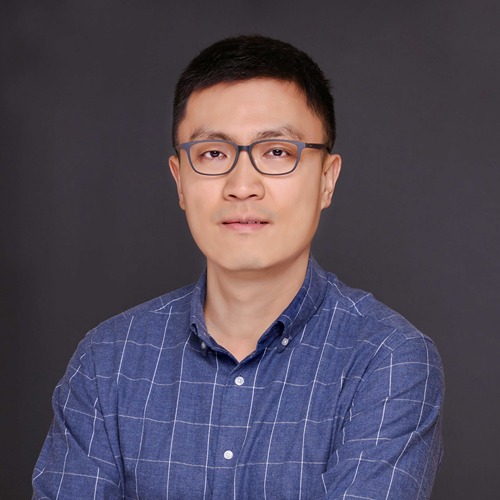
Yanqing Wu
Peking University
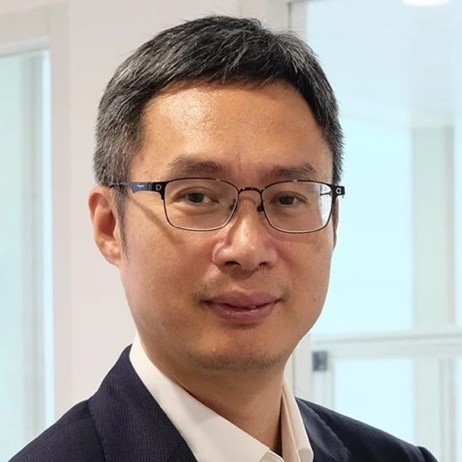
Xiaodong Chen
Nanyang Technological University, Singapore
Professor Xiaodong Chen is a Distinguished University Professor at Nanyang Technological University (NTU), Singapore, where he is a Professor in Materials Science and Engineering, with joint and courtesy appointments in Electrical and Electronic Engineering, Chemistry, and Medicine. His research interests encompass mechanomaterials science and engineering, flexible electronics technology, surface and interface science, and carbon-negative technologies.
Prof. Chen is an elected member of the Royal Society (UK), the German National Academy of Sciences Leopoldina, the Singapore National Academy of Science, and the Academy of Engineering Singapore. He serves on the editorial advisory boards of numerous esteemed international journals, including Advanced Materials, Matter, Chemical Reviews, CCS Chemistry, Small, and Nanoscale Horizons. He is currently the Editor-in-Chief of ACS Nano, a globally recognized leading journal in nanoscience and nanotechnology.
